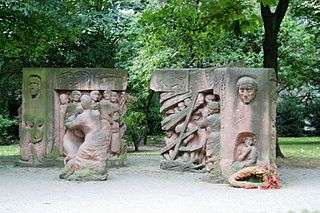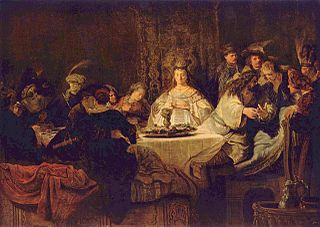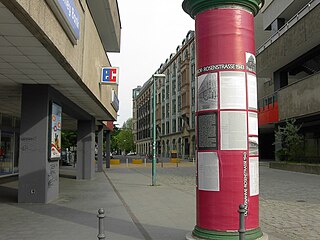
The Wannsee Conference was a meeting of senior government officials of Nazi Germany and Schutzstaffel (SS) leaders, held in the Berlin suburb of Wannsee on 20 January 1942. The purpose of the conference, called by the director of the Reich Security Main Office SS-Obergruppenführer Reinhard Heydrich, was to ensure the co-operation of administrative leaders of various government departments in the implementation of the Final Solution to the Jewish Question, whereby most of the Jews of German-occupied Europe would be deported to occupied Poland and murdered. Conference participants included representatives from several government ministries, including state secretaries from the Foreign Office, the justice, interior, and state ministries, and representatives from the SS. In the course of the meeting, Heydrich outlined how European Jews would be rounded up and sent to extermination camps in the General Government, where they would be killed.

Victor Klemperer was a German scholar who also became known as a diarist. His journals, published in Germany in 1995, detailed his life under the German Empire, the Weimar Republic, the Third Reich, and the German Democratic Republic. Those covering the period of the Third Reich have since become standard sources and have been extensively quoted by Saul Friedländer, Michael Burleigh, Richard J. Evans, and Max Hastings.

The Rosenstrasseprotest is considered to be a significant event in German history as it is the only mass public demonstration by Germans in the Third Reich against the deportation of Jews. The protest on Rosenstraße took place in Berlin during February and March 1943. This demonstration was initiated and sustained by the non-Jewish wives and relatives of Jewish men and Mischlinge,. Their husbands had been targeted for deportation, based on the racial policy of Nazi Germany, and detained in the Jewish community house on Rosenstrasse. The protests, which occurred over the course of seven days, continued until the men being held were released by the Gestapo. The protest by the women of the Rosenstrasse led to the release of approximately 1,800 Berlin Jews.

Theresienstadt Ghetto was established by the SS during World War II in the fortress town of Terezín, in the Protectorate of Bohemia and Moravia. Theresienstadt served as a waystation to the extermination camps. Its conditions were deliberately engineered to hasten the death of its prisoners, and the ghetto also served a propaganda role. Unlike other ghettos, the exploitation of forced labor was not economically significant.

The history of the Jews in Slovakia goes back to the 11th century, when the first Jews settled in the area.

The history of the Jews in the Czech lands, historically the Lands of the Bohemian Crown, including the modern Czech Republic, goes back many centuries. There is evidence that Jews have lived in Moravia and Bohemia since as early as the 10th century. Jewish communities flourished here specifically in the 16 and 17th centuries, and again in the late 19th and early 20th centuries. Local Jews were mostly murdered in the Holocaust, or exiled at various points. As of 2021, there were only approximately 2,300 Jews estimated to be living in the Czech Republic.

Interfaith marriage in Judaism was historically looked upon with very strong disfavor by Jewish leaders, and it remains a controversial issue among them today. In the Talmud and all of resulting Jewish law until the advent of new Jewish movements following the Jewish Enlightenment, the "Haskala", marriage between a Jew and a gentile is both prohibited, and also void under Jewish law.

Fabrikaktion is the term for the last major roundup of Jews for deportation from Berlin, which began on February 27, 1943, and ended about a week later. Most of the remaining Jews were working at Berlin plants or for the Jewish welfare organization. The term Fabrikaktion was coined by survivors after World War II; the Gestapo had designated the plan Große Fabrik-Aktion. While the plan was not restricted to Berlin, it later became most notable for catalyzing the Rosenstrasse protest, the only mass public demonstration of German citizens which contested the Nazi government's deportation of the Jews.
Anti-Jewish laws have been a common occurrence throughout Jewish history. Examples of such laws include special Jewish quotas, Jewish taxes and Jewish "disabilities".
Anti-miscegenation laws or miscegenation laws are laws that enforce racial segregation at the level of marriage and intimate relationships by criminalizing interracial marriage and sometimes also sex between members of different races.
Livia Rothkirchen was a Czechoslovak-born Israeli historian and archivist. She was the author of several books about the Holocaust, including The Destruction of Slovak Jewry (1961), the first authoritative description of the deportation and murder of the Jews of Slovakia.

The Holocaust in Slovakia was the systematic dispossession, deportation, and murder of Jews in the Slovak State, a client state of Nazi Germany, during World War II. Out of 89,000 Jews in the country in 1940, an estimated 69,000 were murdered in the Holocaust.

Presidential exemptions were granted by President of the Slovak State Jozef Tiso to individual Jews, exempting them from systematic persecution through anti-Jewish legislation introduced by Tiso's Jewish Code,, during the Holocaust. The exemptions were exchanged for arbitrary monetary fees. From an estimated 20,000 requests, 600 documented exemptions covering 1,000 people were granted, but only after 1942, when deportations to Auschwitz death camp had already stopped. Following the German invasion of 1944, when deportations resumed, all exemptions were nullified.

The Holocaust in Bohemia and Moravia resulted in the deportation, dispossession, and murder of most of the pre-World War II population of Jews in the Czech lands that were annexed by Nazi Germany between 1939 and 1945.

The Holocaust in the Sudetenland resulted in the flight, dispossession, deportation and ultimately death of many of the 24,505 Jews living in the Reichsgau Sudetenland, an administrative region of Nazi Germany established from former Czechoslovak territory annexed after the October 1938 Munich Agreement. Due to harassment and violence, including during Kristallnacht, ninety percent of the Jews had already left the Sudetenland by mid-1939. The remaining Jews were subject to property confiscation and eventually deportation. During the later years of the war, tens of thousands of Jews and non-Jews were forced laborers in a network of concentration camps in the Sudetenland.

Arijský boj was a pro-Nazi Czech-language weekly tabloid newspaper published between May 1940 and May 1945 in the Protectorate of Bohemia and Moravia. Inspired by the Nazi newspaper Der Stürmer, the newspaper made antisemitism its main theme and was also critical of the Czechoslovak government-in-exile. Denunciations published by the newspaper contributed to the isolation of Jews during the first years of the Holocaust in Bohemia and Moravia.

The Greater German Reich and the Jews: Nazi Persecution Policies in the Annexed Territories 1935–1945 is a book about the Holocaust in areas annexed by Nazi Germany. The book's chapters are arranged in chronological order by annexation date and cover the Saarland, Austria, the Sudetenland, Protectorate of Bohemia and Moravia, Memel Territory, Danzig and West Prussia, the Warthegau, Zichenau, East Upper Silesia, Eupen-Malmedy, Luxembourg, and Alsace-Lorraine. It was first published in German in 2010; an English translation was published in 2015. The book was edited by Jörg Osterloh and Wolf Gruner. The book received generally favorable reviews.

The Holocaust in Bohemia and Moravia: Czech Initiatives, German Policies, Jewish Responses is a book by the German historian Wolf Gruner on the Holocaust in Bohemia and Moravia, the Czech-majority parts of Czechoslovakia partially annexed into Nazi Germany during the German occupation of Czechoslovakia. Beginning before the Munich Agreement, Gruner's book covers the various stages of persecution of Jews which led to their deportation and murder. He argues that the role of Czech collaboration and local initiatives was greater than has been conventionally assumed, and also that Jewish resistance to persecution was substantial. The book has received mixed reviews; some Czech historians have disagreed with Gruner's conclusions while other reviewers generally praised the book with some reservations. The book was published in German in 2016 and in English and Czech in 2019. It received the 2017 Sybil Halpern Milton Memorial Book Prize of the German Studies Association.
A paper divorce is a case in which a couple obtains a legal divorce but continues to live together as before. It may be done for financial reasons. If the divorce is fraudulent, it is called a sham divorce.















